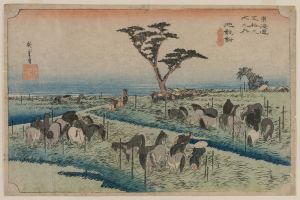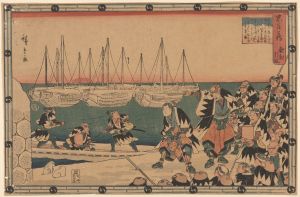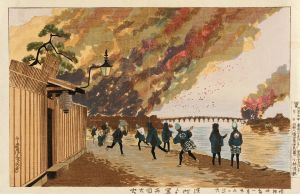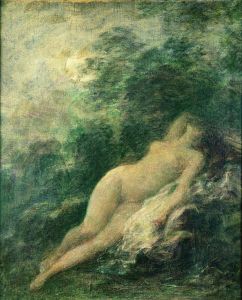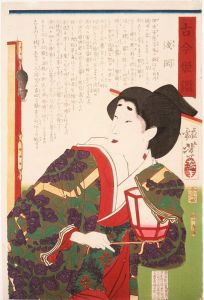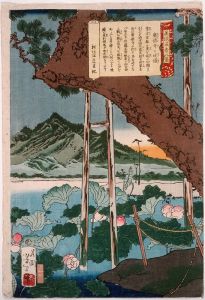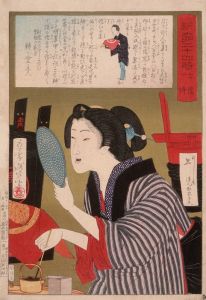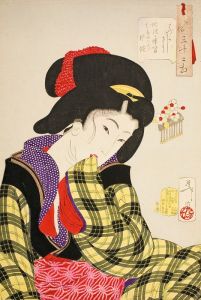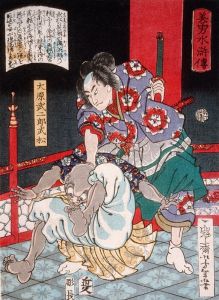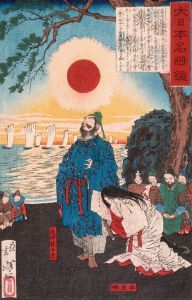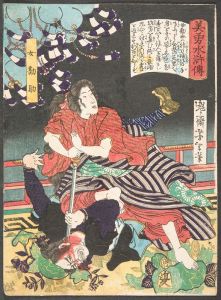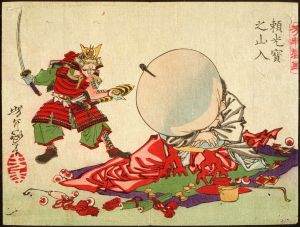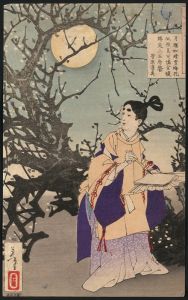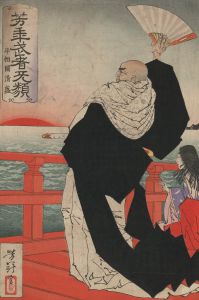
Waisui no tsuki
A hand-painted replica of Tsukioka Yoshitoshi’s masterpiece Waisui no tsuki, meticulously crafted by professional artists to capture the true essence of the original. Each piece is created with museum-quality canvas and rare mineral pigments, carefully painted by experienced artists with delicate brushstrokes and rich, layered colors to perfectly recreate the texture of the original artwork. Unlike machine-printed reproductions, this hand-painted version brings the painting to life, infused with the artist’s emotions and skill in every stroke. Whether for personal collection or home decoration, it instantly elevates the artistic atmosphere of any space.
"Yoshitoshi Tsukioka (1839–1892) was a renowned Japanese ukiyo-e artist, known for his innovative and dramatic style during the late Edo and early Meiji periods. One of his notable works is 'Waisui no tsuki,' which translates to 'Moon of the Lonely House.' This piece is part of his acclaimed series 'One Hundred Aspects of the Moon' (Tsuki hyakushi), which was created between 1885 and 1892. The series is celebrated for its exploration of historical, literary, and mythical themes, all unified by the motif of the moon.
'Waisui no tsuki' is a woodblock print that exemplifies Yoshitoshi's mastery in capturing emotion and atmosphere. The print depicts a scene inspired by a story from Japanese folklore or literature, a common practice in Yoshitoshi's work. The moon, a central element in the series, is often used to evoke a sense of mystery, beauty, and contemplation. In this particular piece, the moon's presence adds a layer of depth and emotion to the narrative being portrayed.
Yoshitoshi's work is characterized by its dynamic composition and expressive use of color and line. He was known for his ability to convey complex emotions and narratives through his art, often drawing from historical and literary sources. His prints frequently feature strong contrasts between light and shadow, which enhance the dramatic effect and highlight the emotional intensity of the scenes.
The 'One Hundred Aspects of the Moon' series, including 'Waisui no tsuki,' was produced during a time of significant cultural and social change in Japan. The Meiji Restoration, which began in 1868, marked the transition from the feudal Edo period to the modern Meiji era. This period was characterized by rapid modernization and Westernization, which influenced many aspects of Japanese life, including art. Despite these changes, Yoshitoshi remained committed to the traditional ukiyo-e style, while also incorporating new techniques and themes that reflected the evolving cultural landscape.
Yoshitoshi's work, particularly the 'One Hundred Aspects of the Moon' series, is highly regarded for its artistic and historical significance. His prints offer a window into the cultural and social dynamics of late 19th-century Japan, as well as a testament to the enduring appeal of traditional Japanese art forms. Today, Yoshitoshi is celebrated as one of the last great masters of ukiyo-e, and his work continues to be studied and admired for its technical skill and emotional depth.
In summary, 'Waisui no tsuki' by Tsukioka Yoshitoshi is a significant work within the 'One Hundred Aspects of the Moon' series, showcasing the artist's ability to blend traditional Japanese art with the changing cultural context of his time. The piece is a testament to Yoshitoshi's enduring legacy as a master of ukiyo-e, capturing the imagination of audiences both in Japan and around the world."





